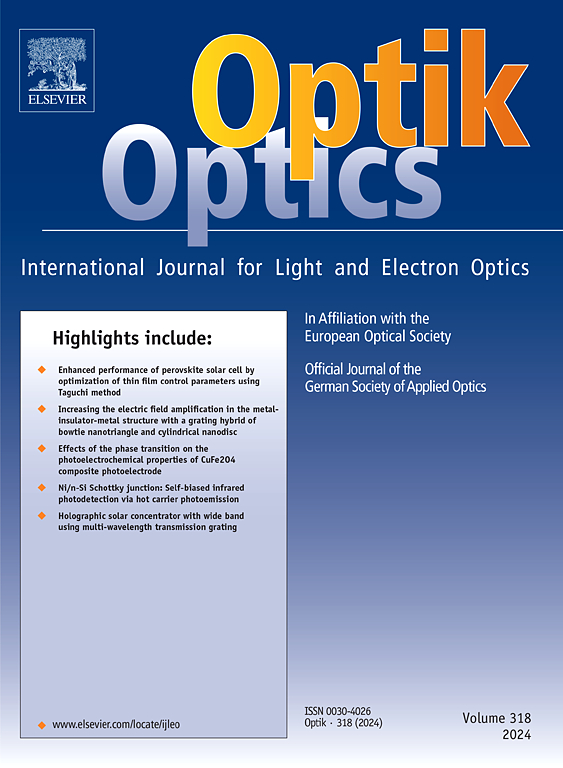超快贝塞尔激光束切割平凸圆柱透镜
IF 3.1
3区 物理与天体物理
Q2 Engineering
引用次数: 0
摘要
而微柱透镜应用广泛,是激光、光探测与测距(LiDAR)等领域的核心光学元件。它们极难切割。本研究利用超快激光的峰值功率和超快脉冲,以及贝塞尔光束的长焦深,使贝塞尔光束从微圆柱透镜的底平面入射,最终在透镜内部产生修饰表面。改性后的微柱透镜可以吸收波长为10.6 μm的CO2激光能量,利用玻璃材料对CO2激光的高吸收率产生高热张力应力,然后沿改性后的表面分离。实验结果表明,影响切割质量的主要因素是激光入射面、单脉冲能量和脉冲修正间距。利用该方法成功分离出R = 2 mm, F = 3.87 mm,宽度为3 mm的BK7玻璃微柱透镜。最大切割速度可达500 mm/s,切割断面粗糙度为530 nm,无切屑和微裂纹,实现了良好的切割质量,为微圆柱透镜的高效切割提供了一种有效的方法。本文章由计算机程序翻译,如有差异,请以英文原文为准。
Cutting plano-convex cylindrical lenses with ultrafast Bessel laser beam
While micro-cylindrical lenses are used in a wide variety of applications and are a core optical component in lasers and Light Detection and Ranging (LiDAR), etc. They are extremely difficult to cut. In this research, the peak power and ultrafast pulse of an ultrafast laser, as well as the long focal depth of the Bessel beam, were employed to make the Bessel beam incident from the bottom plane of a micro-cylindrical lenses, to ultimately produce a modified surface inside the lenses. The modified micro-cylindrical lenses can then absorb CO2 laser energy with a wavelength of 10.6 μm and generate high thermal tension stress via the high rate of absorption rate of the CO2 laser by the glass material, after this can be separated along the modified surface. Experimental results demonstrate that the factors affecting the cutting quality are primarily the laser incidence surface, the single-pulse energy, and the pulse modification spacing. Via the use of this method, the separation of a micro-cylindrical lens made of BK7 glass with R = 2 mm, F = 3.87 mm, and a width of 3 mm was successfully achieved. Furthermore, the maximum cutting speed reached 500 mm/s with a cut section roughness of 530 nm without any chipping or micro-cracking, thereby achieving good cutting quality and providing an effective method for the efficient cutting of micro-cylindrical lenses.
求助全文
通过发布文献求助,成功后即可免费获取论文全文。
去求助
来源期刊

Optik
物理-光学
CiteScore
6.90
自引率
12.90%
发文量
1471
审稿时长
46 days
期刊介绍:
Optik publishes articles on all subjects related to light and electron optics and offers a survey on the state of research and technical development within the following fields:
Optics:
-Optics design, geometrical and beam optics, wave optics-
Optical and micro-optical components, diffractive optics, devices and systems-
Photoelectric and optoelectronic devices-
Optical properties of materials, nonlinear optics, wave propagation and transmission in homogeneous and inhomogeneous materials-
Information optics, image formation and processing, holographic techniques, microscopes and spectrometer techniques, and image analysis-
Optical testing and measuring techniques-
Optical communication and computing-
Physiological optics-
As well as other related topics.
 求助内容:
求助内容: 应助结果提醒方式:
应助结果提醒方式:


